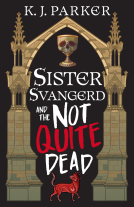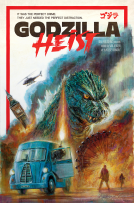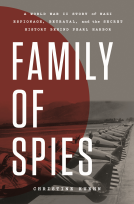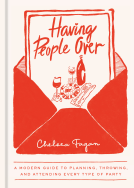
The Comic Book Film Adaptation
Exploring Modern Hollywood’s Leading Genre
by Liam Burke
This title was previously available on NetGalley and is now archived.
Send NetGalley books directly to your Kindle or Kindle app
1
To read on a Kindle or Kindle app, please add kindle@netgalley.com as an approved email address to receive files in your Amazon account. Click here for step-by-step instructions.
2
Also find your Kindle email address within your Amazon account, and enter it here.
Pub Date Apr 07 2015 | Archive Date Feb 16 2016
Description
The first study of how the comic book moved to the center of Hollywood film production in the twenty-first century
In the summer of 2000 X-Men surpassed all box office expectations and ushered in an era of unprecedented production of comic book film adaptations. This trend, now in its second decade, has blossomed into Hollywood’s leading genre. From superheroes to Spartan warriors, The Comic Book Film Adaptation offers the first dedicated study to examine how comic books moved from the fringes of popular culture to the center of mainstream film production.
Through in-depth analysis, industry interviews, and audience research, this book charts the cause-and-effect of this influential trend. It considers the cultural traumas, business demands, and digital possibilities that Hollywood faced at the dawn of the twenty-first century. The industry managed to meet these challenges by exploiting comics and their existing audiences. However, studios were caught off-guard when these comic book fans, empowered by digital media, began to influence the success of these adaptations. Nonetheless filmmakers soon developed strategies to take advantage of this intense fanbase, while codifying the trend into a more lucrative genre, the comic book movie, which appealed to an even wider audience. Central to this vibrant trend is a comic aesthetic, that sees filmmakers utilizing digital filmmaking technologies to engage with the language and conventions of comics like never before.
The Comic Book Film Adaptation explores this unique moment in which cinema is stimulated, challenged, and enriched by the once-dismissed medium of comics.
Liam Burke, Melbourne, Australia, is a media studies lecturer at Swinburne University of Technology. His publications include the Pocket Essential Superhero Movies and the edited collection Fan Phenomena: Batman.
Advance Praise
No Advance Praise Available
No Advance Praise Available
Marketing Plan
No Marketing Info Available
No Marketing Info Available
Available Editions
| EDITION | Hardcover |
| ISBN | 9781628462036 |
| PRICE | $60.00 (USD) |
Average rating from 8 members
Featured Reviews
 Bill C, Reviewer
Bill C, Reviewer
The Comic Book Film Adaptation: Exploring Modern Hollywood’s Leading Genre, by Liam Burke, is a scholarly look at the comic book movie genre, examining why these movies became so popular since the turn of the new century as well as the various elements than can be said to constitute the genre. Burke also discusses the question of fidelity to the original source material and how that fidelity has lately been affected by the rise of mass fan culture. It’s a learned, well-documented, highly informative exploration and highly recommended for anyone interested in comics books, either their film or print versions.
After a brief introduction, the book moves through five relatively lengthy sections, each focused on a different area. I’ll address each chapter separately.
One: Burke opens his examination with the simple question of what is it that led to first the rise of comic book movies and then their utter dominance at the box office in what is called “The Golden Age of Comic Book Film Making.” Generally speaking, he breaks the reasons down into three categories of culture, technology, and business economics. More precisely: the impact of 9/11 on the US population, creating a need/desire for heroes in the face of national trauma; the technological progress, especially in CGI, which allowed filmmakers to present on screen comic book action that previously would have been either impossible or terrible looking; and finally, the fact that comic books brought to their producers a built-in audience, a multitude of stories allowing for serial or franchise films, and a built-in iconography for ease of merchandising. Each of these areas is further subdivided and examined in thoughtful detail, as for instance when the cultural aspect is sub-divided into nostalgia, wish fulfillment, escapism, and ideology.
Two: Here, Burke explores the elements of the comic book genre, placing comic book heroes in a larger context alongside Western heroes and 1970s/1980s action heroes. He makes clear early on as well that “a comic book movie does not need to actually be based on a comic book to be included in this genre; it simply needs to adopt elements synonymous with the comic book movie (he places The Matrix, for example, in this genre despite it having no comic source). Amongst the elements examined are protagonists, and a heightened reality, and a “comic aesthetic.” In this chapter he does an in-depth comparison of The League of Extraordinary Gentlemen and Watchmen films, which he places on the opposite ends of the “Fidelity” spectrum in terms of how faithful they were to the source material.
Three: The discussion at the end of chapter two leads into a much more extensive look at the idea of fidelity, in particular the connection between fans and fidelity. Burke charts this connection from the early days of the Marvel “Bullpen” where Stan Lee would respond to fan’s letters in the comic books to the current rise in fandom on the net and the web’s ability to create a ripple effect, whereby fan reaction emanates outward through the general population, thus magnifying its impact. As an example, he points to how dismissive the creators of the original Batman were of fan reaction to the film, saying “This is too big a budget movie to worry about what a fan of a comic would say: or referring to fans as “a small cult.” He contrasts that to the current relationship between fans and comic book movie creators, with those creators now engaging in back and forths on the web, attending conferences, offering pre-screenings to fans, etc.
Four: In this section Burke takes a much more detailed look at the “comic aesthetic,” diving into the ways in which comic books have informed the look of films and vice versa. He begins by looking at what would be the base comparison points: a comic book’s panel versus a film’s shot. The chapter then looks in detail at various elements both film and comic books employ and how they are similar or different. Included are aspects such as transitions, angles, conveyance of motion, framing, passage of time, economy of detail, color, and the like. One specific comparison is for instance how the notorious “bullet time” slo-mo in The Matrix can approximate the time a film viewer has to look at an individual panel.
Five: In the final chapter (excepting the general conclusion), Burke looks at how “the Marvel Way” has been adapted from comic books to film, a stylistic flourish and exaggeration that “once might have been dismissed as ‘comic-booky,’ but are today among Hollywood’s most relied-on convention.” He leans heavily on the guidebook How to Draw Comics the Marvel Way by Stan Lee and John Buscema, moving back and forth from their advice (often shown pictorially) on illustrating in the print medium to how that advice has been translated into film. A few categories in this chapter are “framing and composition,” “Performance,” and selecting the “chosen moment” to illustrate (or film).
The Comic Book Film Adaptation is extremely well sourced throughout, calling upon experts in a host of fields either through quotations/citations or through interviews. As one might (should) expect, Scott McCloud is heavily quoted when Burke examines the elements of the comic book. But he also has interviews with directors and actors, quotes from a host of theorists/critics working in the fields of film theory, literary theory, popular culture, semiotics, and others. And as one would hope, but as I’ve found is not always the case, the book, which after all is focused on two visual mediums, is liberally dotted with illustrations, photographs, and movie stills. Burke himself is a levelheaded, thoughtful, and clarifying guide throughout, never letting the sometimes-esoteric vocabulary of some theory to overshadow or confuse whatever point he is elucidating. This is a fantastic look a the comic book movie — clear, insightful, authoritative, timely, well documented and sourced, and highly readable. And thus highly recommended.
Readers who liked this book also liked:
L.M Montgomery
Children's Fiction, Comics, Graphic Novels, Manga, Teens & YA
Tadashi Agi
Comics, Graphic Novels, Manga, Cooking, Food & Wine, Entertainment & Pop Culture
Dean R. Lomax; Robert Nicholls
Nonfiction (Adult), Outdoors & Nature, Science


















